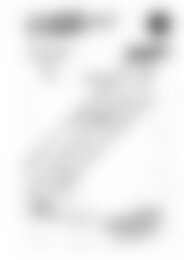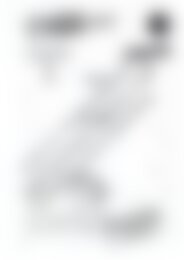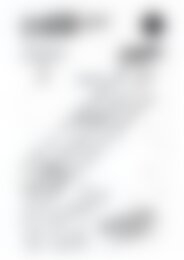8561RB AC Science Year 6 revised edition LR watermark
You also want an ePaper? Increase the reach of your titles
YUMPU automatically turns print PDFs into web optimized ePapers that Google loves.
Earth and space sciences<br />
Lesson 1<br />
What is orbiting around in the solar system?<br />
Content focus:<br />
<strong>Science</strong> inquiry:<br />
The relative distance of the planets from the Sun and their movement around the Sun<br />
Processing, modelling and analysing | Evaluating<br />
Background information<br />
• There are eight planets in the solar system, and there are<br />
many representations of the size and location of these planets.<br />
Many of these misrepresent the relative size of the planets and<br />
the distance between them. It is common to see them arranged<br />
in a horizontal line, but this is not accurate and the chances of<br />
the planets ever actually lining up is very improbable.<br />
• The pocket solar system is intended to address the<br />
misrepresentation of the distance between planets. This will<br />
also make it clearer that each planet orbits the Sun and, the<br />
further away from the Sun they are, the longer their orbit.<br />
Preparation<br />
• Students will require the following equipment for the activity<br />
on page 31: 1m strips of paper; coloured pencils or markers;<br />
ruler; scissors; tape or glue.<br />
• Locate various mnemonics that are used to help remember the<br />
order of the planets from the Sun; for example, My (Mercury)<br />
Very (Venus) Easy (Earth) Method (Mars) Just (Jupiter) Speeds<br />
(Saturn) Up (Uranus) Nothing (Neptune).<br />
The lesson<br />
• Pages 29 and 30 are to be used together.<br />
• This lesson could be accompanied by various videos explaining<br />
the size and distance of the solar system planets, especially<br />
after reading through the text. The NASA website can also be<br />
used to view models of each planet.<br />
• Discuss ways to remember the planets and their order from<br />
the Sun by writing a class mnemonic; for example, My Very<br />
Excited Monster Just Surprised Us Now.<br />
• Show students a completed pocket solar system and remind<br />
them that this is demonstrating the distances between the<br />
planets in a simplistic way, and that the planets are not usually<br />
lined up in orbit like this. It represents the planets as they<br />
would be found somewhere along the ellipse at the distance<br />
shown on the pocket solar system.<br />
Do any of your students learn better through<br />
kinaesthetic activities?<br />
Consider having students role-play the orbiting planets, with<br />
a student as the central Sun, and others moving around at<br />
different speeds.<br />
Answers<br />
Page 30<br />
1. Teacher check: Table should include columns for: position in<br />
the order of planets from the Sun; diameter; time taken to orbit<br />
the Sun; number of moons.<br />
2. (a) Mercury (b) Neptune (c) Neptune (d) Venus<br />
3. (a) Planets with rocky surfaces: Mercury, Mars, Venus, Earth.<br />
(b) Planets that are enormous and are mostly made of gases:<br />
Jupiter, Saturn, Uranus, Neptune.<br />
4. The outer planets have a stronger gravitational pull and a<br />
larger magnetic field, which attracts asteroids and pulls them<br />
into the planet’s orbit.<br />
© R.I.C. Publications<br />
Low resolution display copy<br />
Measure in a minute<br />
Ask students to share three things they learnt today about the<br />
solar system, two things they found interesting, and one thing<br />
they want to find out more about.<br />
28 Australian Curriculum <strong>Science</strong> (<strong>Year</strong> 6) 978-1-923005-13-6 R.I.C. Publications ® ricpublications.com.au







